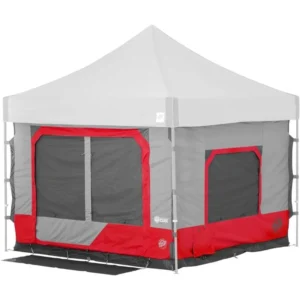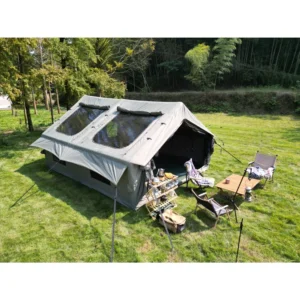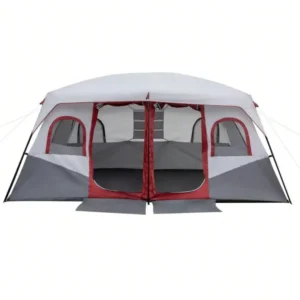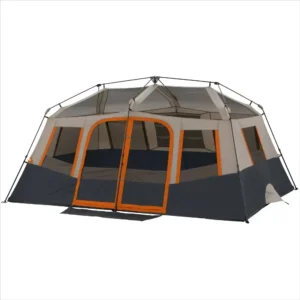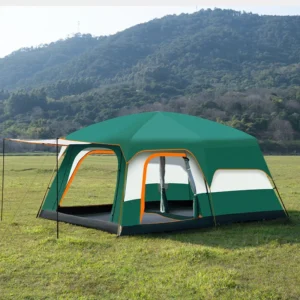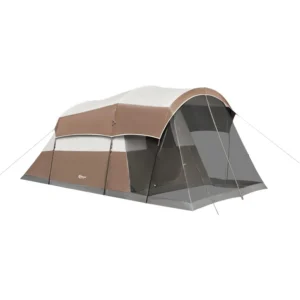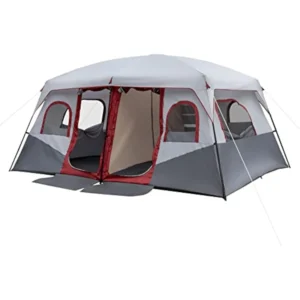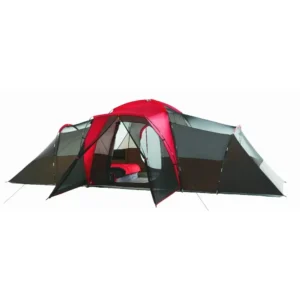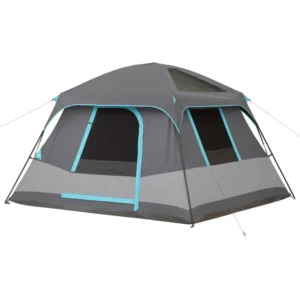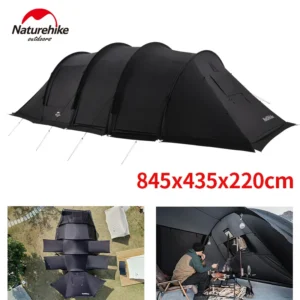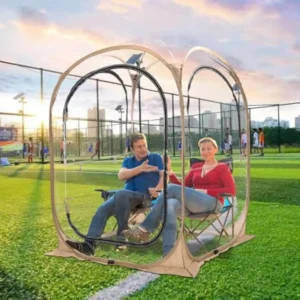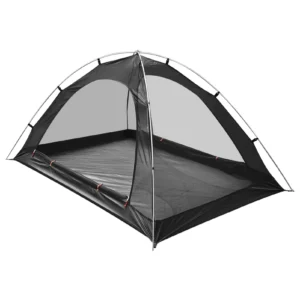Two Room Camping Tent
Get more space and privacy with a two-room camping tent. These offer separate areas for sleep, play, or gear, making family or group trips more organized and comfy.
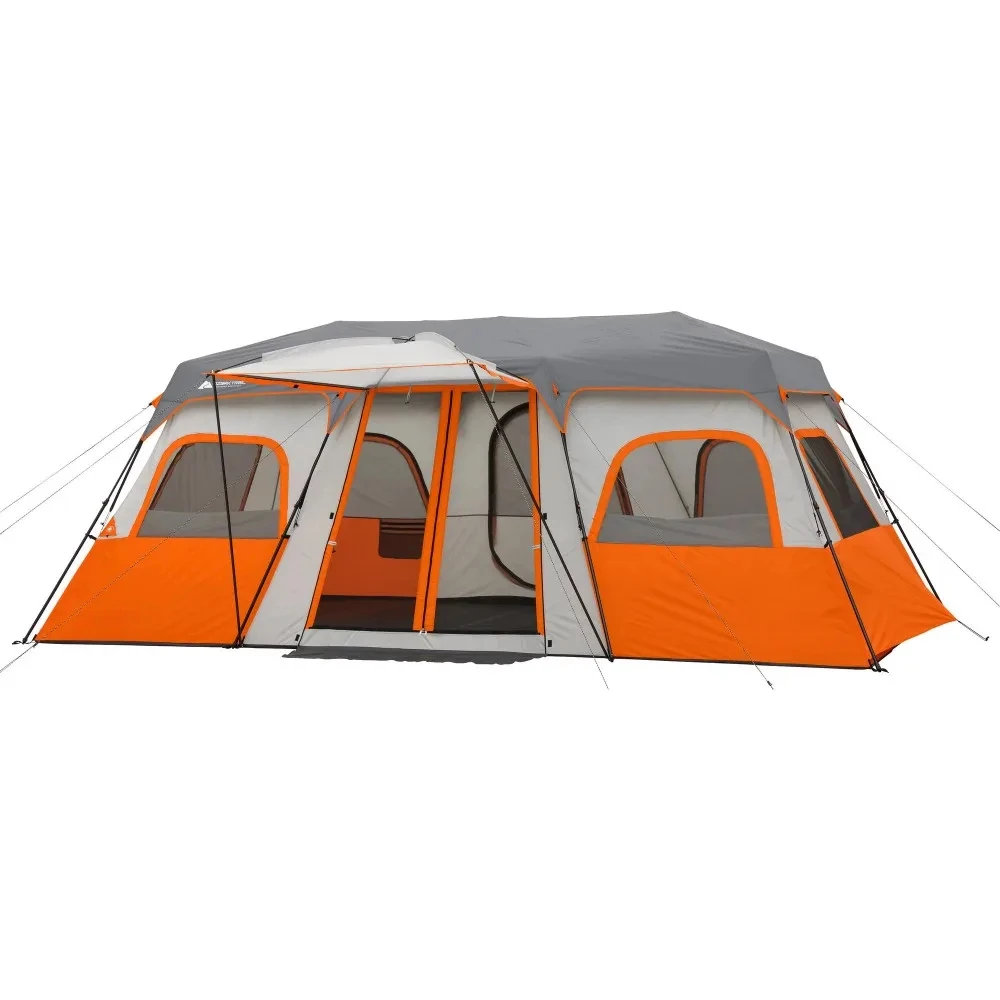
Showing 1–12 of 13 results
Instant Camping Tent, Two Room Camping Tent
$768.98 Select options This product has multiple variants. The options may be chosen on the product pageEasy Setup Camping Tent, Instant Camping Tent, Two Room Camping Tent
$552.67 Select options This product has multiple variants. The options may be chosen on the product pageTwo Room Camping Tent, Waterproof Camping Tent
$2,922.10 Select options This product has multiple variants. The options may be chosen on the product pageCanvas Camping Tent, Two Room Camping Tent, Waterproof Camping Tent
$630.73 Select options This product has multiple variants. The options may be chosen on the product page- $476.52 Select options This product has multiple variants. The options may be chosen on the product page
Canvas Camping Tent, Two Room Camping Tent
$533.46 Select options This product has multiple variants. The options may be chosen on the product pageTwo Room Camping Tent, Waterproof Camping Tent, Winter Camping Tent
Price range: $358.83 through $515.98 Select options This product has multiple variants. The options may be chosen on the product pageTwo Room Camping Tent, Waterproof Camping Tent
$509.93 Select options This product has multiple variants. The options may be chosen on the product pageCanvas Camping Tent, Easy Setup Camping Tent, Two Room Camping Tent
$466.38 Select options This product has multiple variants. The options may be chosen on the product pageTall / Stand Up Camping Tent, Two Room Camping Tent
$407.93 Select options This product has multiple variants. The options may be chosen on the product pageHeavy Duty 4 Season Tent, Two Room Camping Tent, Waterproof Camping Tent, Winter Camping Tent
$2,353.92 Select options This product has multiple variants. The options may be chosen on the product page
Showing 1–12 of 13 results
Why Choose a Two-Room Camping Tent?
A two-room camping tent elevates your outdoor experience with thoughtfully divided living spaces separated by interior dividers. Unlike standard single-room tents, these practical shelters transform camping into a more home-like experience while still embracing the great outdoors.
- Enhanced Privacy – Create separate sleeping quarters for parents and children, couples, or friends without sacrificing togetherness
- Superior Organization – Designate spaces for sleeping, changing clothes, and storing gear to keep your camping area tidy
- Extended Stay Comfort – Enjoy a more civilized camping experience for longer trips with defined living and sleeping areas
- Group Versatility – Perfect for families seeking privacy, friend groups wanting personal space, or couples desiring a luxury camping setup with room to spread out
Whether you’re planning a weekend family getaway or an extended backcountry adventure, a two-room tent from Explore Elements provides the perfect balance of togetherness and personal space.
Key Features of Premium Two-Room Tents
Understanding what separates basic models from premium two-room tents will help you make an informed investment in your outdoor living space. Quality multi-room shelters incorporate thoughtfully designed elements that enhance comfort, durability, and functionality.
Room Divider Options
The divider system forms the heart of any two-room tent’s functionality, defining how effectively the space can be separated.
- Full-Height Zippered Dividers – Provide maximum privacy with complete visual separation
- Toggle or Clip Attached Panels – Allow quick reconfiguration between open and divided layouts
- Partial-Height Dividers – Offer a balance of separation and airflow with some visual privacy while maintaining ventilation
The best dividers use quality fabric that matches the tent’s overall durability while featuring convenient attachment systems that don’t require engineering skills to operate.
Weather Protection Systems
Two-room tents typically offer more living space, making robust weather protection essential for a comfortable experience in varying conditions.
- Full-Coverage Rainflies – Extend beyond tent walls for superior protection from driving rain
- High Waterproof Ratings – Look for 3000mm+ hydrostatic head ratings for reliable waterproofing, similar to dedicated waterproof camping tents
- Reinforced Seams – Factory-taped or sealed seams prevent water intrusion at vulnerable connection points
- Sturdy Guy-Out Points – Multiple reinforced attachment points help stabilize the larger structure in windy conditions
Premium models incorporate weather protection systems that stand up to unexpected storms without compromising interior comfort.
Ventilation Design
Proper airflow becomes increasingly important in larger tents to prevent stuffiness and condensation buildup.
- Multiple Mesh Windows – Positioned strategically for cross-ventilation throughout both rooms
- Adjustable Roof Vents – Allow hot air to escape even during light rain
- Low Ground Vents – Create complete air circulation by drawing in cool air at floor level
- Independent Room Ventilation – Controls that let each room’s occupants adjust their comfort level
Effective ventilation prevents the muggy, damp conditions that can make an otherwise great tent uncomfortable, especially during warmer weather or with multiple occupants.
Selecting the Right Two-Room Tent
Finding your ideal two-room tent requires balancing several key considerations to match your specific camping style and needs.
- Realistic Capacity – Manufacturer “person” ratings typically assume minimal personal space; for comfort, subtract 1-2 people from the maximum rating
- Setup Complexity – Consider your camping style and whether you need the quick deployment of an instant camping tent or can manage a more traditional pole system
- Weight Considerations – Two-room tents naturally weigh more; determine if you’ll primarily car camp or need to carry your shelter longer distances
- Footprint Dimensions – Measure your typical camping spaces (particularly at favorite campgrounds) to ensure your tent will fit available pads
- Height Specifications – If standing room is important, look for cabin-style designs similar to tall stand up camping tents with vertical walls
Setup Types and Complexity
The ease of pitching your tent can significantly impact your camping experience, especially after a long travel day or in challenging weather.
Traditional pole systems offer proven reliability and typically support larger, more stable structures, but require more time and often two people for setup. Newer quick-pitch designs incorporate pre-attached poles or hub systems that dramatically reduce setup time to 5-10 minutes but may sacrifice some stability in extreme conditions. For ultimate convenience, some two-room models feature inflatable support beams that eliminate poles entirely while providing surprising stability.
Popular Two-Room Tent Configurations
Two-room tent designs vary widely in their layout approach, each offering different advantages for specific camping scenarios.
- Classic Cabin Dividers – Square or rectangular structures with a central divider creating equal rooms, offering the most efficient use of space and typically providing standing room throughout
- Tunnel Configurations – Elongated designs with rooms arranged sequentially, providing excellent wind resistance but sometimes less headroom in sleeping areas
- Dome Hybrids – Based on dome camping tent architecture with an attached second room, balancing stability and livability
- L-Shaped Layouts – Innovative designs that create more privacy through geometric separation rather than just a divider
For enhanced functionality, many two-room tents include additional covered spaces like vestibules or screen rooms that provide protected areas for gear storage, cooking, or bug-free relaxation.
Materials and Durability Factors
The materials used in two-room tent construction directly impact both performance and longevity, making them critical factors in your selection process.
Tent fabrics are typically measured in denier (D) ratings, with higher numbers indicating thicker, more durable materials. Premium two-room tents often feature 68-75D polyester for walls and rainflies, balancing weight and durability, while floors should utilize heavier 120-150D materials to withstand constant pressure and abrasion.
Pole materials significantly affect a tent’s strength-to-weight ratio, with options including:
* Fiberglass – Economical but heavier and less durable in high winds
* Aluminum – Lighter and significantly stronger, typically worth the investment
* Steel – Used in some cabin-style models for maximum stability when weight isn’t a concern
Quality hardware often distinguishes premium models, with YKK zippers, reinforced stake points, and robust rainfly attachments that prevent common failure points during extended use.
Are Two-Room Tents Worth the Investment?
Two-room tents typically command higher prices than their single-room counterparts, but offer valuable benefits that often justify the additional cost for certain camping scenarios.
For weekend family campers, the privacy and organization a two-room tent provides can transform the camping experience, eliminating the cramped quarters that sometimes make group camping challenging. Extended-stay campers benefit even more, as the separate spaces allow for more civilized living arrangements during multi-day adventures. For groups mixing early risers and night owls, the room divider creates natural boundaries that accommodate different schedules and sleeping habits.
However, if you primarily backpack or move camp frequently, the added weight and setup complexity might outweigh the benefits. The value equation ultimately depends on your camping style, frequency, and the importance you place on personal space while enjoying the outdoors.
Related Camping Equipment to Consider
To maximize the benefits of your two-room tent investment, consider these complementary additions:
- Tent-compatible room organizers that attach to walls for efficient storage
- Outdoor rugs or footprint extenders for clean entry areas
- Battery-powered LED lighting systems for each room
- Compact folding furniture that enhances living space functionality
- Weather protection accessories that can extend your camping season into a winter camping tent experience with proper preparation
These accessories enhance the inherent advantages of separate rooms while creating a more comfortable and organized camping experience for everyone in your group.


